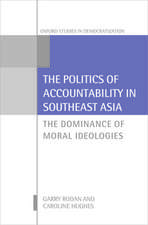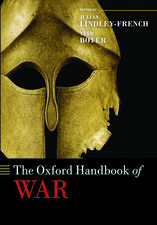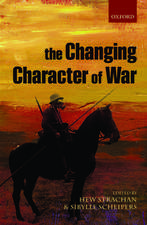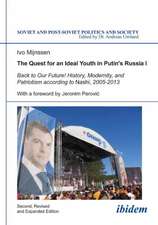Central Asia: Views from Washington, Moscow, and Beijing: Views from Washington, Moscow, and Beijing
Autor Eugene B. Rumer, Dmitri Trenin, Huasheng Zhaoen Limba Engleză Paperback – 15 iul 2007
| Toate formatele și edițiile | Preț | Express |
|---|---|---|
| Paperback (1) | 443.65 lei 6-8 săpt. | |
| Taylor & Francis – 15 iul 2007 | 443.65 lei 6-8 săpt. | |
| Hardback (1) | 1272.54 lei 6-8 săpt. | |
| Taylor & Francis – 15 feb 2007 | 1272.54 lei 6-8 săpt. |
Preț: 443.65 lei
Nou
Puncte Express: 665
Preț estimativ în valută:
84.89€ • 88.82$ • 70.52£
84.89€ • 88.82$ • 70.52£
Carte tipărită la comandă
Livrare economică 02-16 aprilie
Preluare comenzi: 021 569.72.76
Specificații
ISBN-13: 9780765619952
ISBN-10: 0765619954
Pagini: 232
Dimensiuni: 152 x 229 x 14 mm
Greutate: 0.32 kg
Ediția:1
Editura: Taylor & Francis
Colecția Routledge
Locul publicării:Oxford, United Kingdom
ISBN-10: 0765619954
Pagini: 232
Dimensiuni: 152 x 229 x 14 mm
Greutate: 0.32 kg
Ediția:1
Editura: Taylor & Francis
Colecția Routledge
Locul publicării:Oxford, United Kingdom
Cuprins
Introduction, Rajan Menon; Chapter 1 The United States and Central Asia, Eugene Rumer; Chapter 2 Russia and Central Asia, Dmitri Trenin; Chapter 3 Central Asia in China’s Diplomacy, Huasheng Zhao;
Notă biografică
Eugene Rumer, Dmitri Trenin, Huasheng Zhao, Rajan Menon
Descriere
The disintegration of the Soviet Union in 1991 transformed Central Asia's political landscape. This region of five sovereign states of some fifty million people became a major focus of interest and influence for competing poles of power. This work features contributors who offer a four-part analysis of the region's importance in world affairs.











